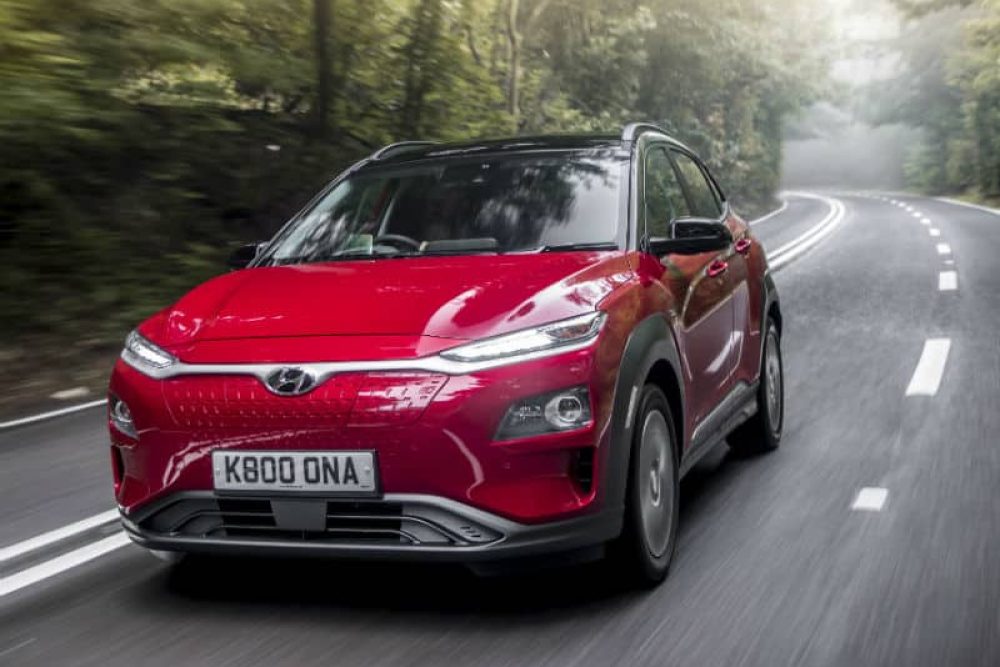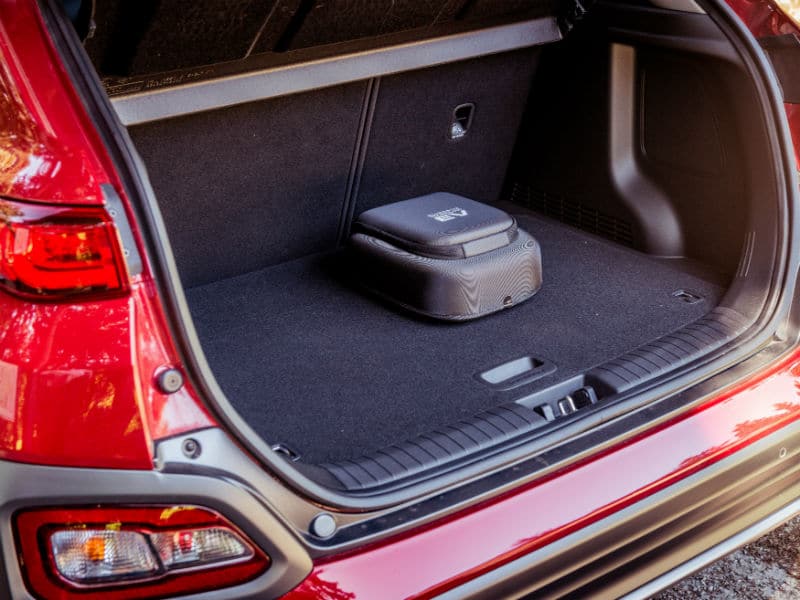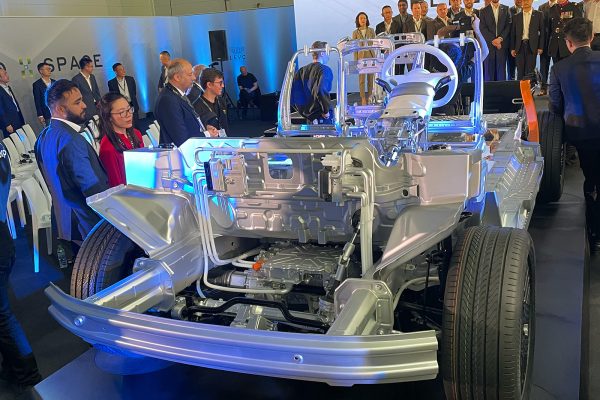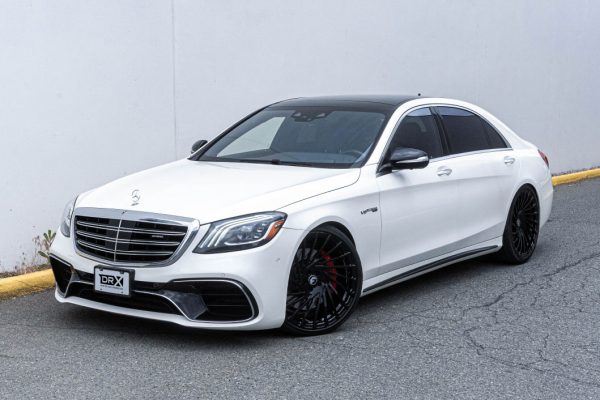Hyundai Kona Electric 150kW Premium SE 64kWh 204PS Auto review
- P11D value: £36,240
- BIK: £36,240/13%
- 5-door small SUV
- 201bhp / 395Nm Permanent Magnet Synchronous Motor electric battery
- Performance: 7.6s / 104mph
- CO2 emissions/economy: 0g/km / 248 miles
What is it?
THE standard Kona is a well liked compact SUV that takes the usual benefits and packages them up in a distinctive design that is covered in sharp edges, converging crease, multiple light units and contrasting plastics and paints. It sounds a mess but works well.
Now Hyundai has taken the petrol and diesel engines out and replaced them with a pure electric drivetrain. There are two power outputs available from two battery capacities – the smaller 39kWh battery provides 134bhp, while the higher capacity 64kWh battery can deliver 201bhp. The increased capacity also increases range, with a WLTP rated range of 279 miles.
The entry model seems designed intentionally to upset Nissan, offering marginally more range in an on-trend SUV bodystyle, and all but matching it on price. Prices rise to just under £32,000 (including the government OLEV grant) for the fully-specced, big battery, Premium SE model.
Why would you want to drive a Hyundai Kona EV?
- We got to drive the 64kWh version on the launch event, which means it was the more rapid of the two options. We all know about the instant acceleration offered by electric cars, but the Kona still surprises; 62mph comes along in just 7.6 seconds, despite the car weighing just under 1.7 tonnes. However, while it’s quick off the line, thrust fades away once you start reaching low motorway speeds, and it’s gone entirely at three figures.
- It also does a good job at matching its official range, although the caveat there is that the first test was done on perfect, near empty, Norwegian roads – we’ll be testing the car on the flawed UK network soon. Still, despite a bit of ‘performance testing’ and a fair slog of motorway miles, the Kona’s on board computer suggested we’d get pretty close to that near 300 mile range. With rapid charging taking just 75 minutes to reach 80% charge (or about 260 miles of range) the days of range anxiety should be mostly just a memory.
- While charging at 50kW at motorway services or the like can top the car up quickly, most will charge at home. Leaving it plugged in overnight will see a full charge in around nine and a half hours, assuming you’ve had a 7kW charger installed. These are subsidised up to £500 by the government, and even those with the heaviest of right foots will find that electricity is far cheaper than petrol.
- Electric power means zero emissions, and that, in turn, means lower company car tax. With a BIK burden of just 13% (based on the full price, not the price after the government OLEV subsidy) that translates to a 20% taxpayer bill of less than £80 a month.
- Ignore the EV side of things, and the Kona performs as any other similarly sized SUV. It rides quite nicely thanks to that longer suspension travel, and there’s enough room inside to accommodate four adults in comfort, and five at a squeeze. The boot remains a decent size too, despite losing 29 litres due to the presence of a battery pack under the floor.
- It’s also loaded with equipment, at least in Premium or Premium SE spec. It’s positively luxurious, with heated and ventilated leather seats and a heated steering wheel, eight-inch infotainment with Android Auto and Apple CarPlay, wireless phone charging, head up display, LED lights front and rear and a Krell audio system with eight speakers and subwoofer.
- Hyundai has not overlooked safety, with the Kona EV being equipped with automatic emergency braking with pedestrian detection, blind spot protection, lane keeping assist, rear cross traffic alerts and much more.
Reduced depth boot and Krell sound system subwoofer
What might you put off a Hyundai Kona EV?
- Like so many of these urban off-roaders, the Kona isn’t designed to venture further off the Queen’s highway than a Waitrose car park. There’s no four-wheel drive option, which also means that the torquey drivetrain can set the front end squirming around under power.
- The soft suspension makes for a pleasant ride, but body roll is reasonably significant, and the Kona can’t be described as fun to drive – at least beyond the grin-inducing instant acceleration.
- Smooth braking is also tricky, as it is on many electric vehicles. There’s energy recuperation under braking, so the car wastes as little energy as possible, but that level changes as the speed drops, making smooth stops tricky. There are also four levels of regenerative braking to choose from, which seems unnecessary.
- Styling is a little divisive, and Hyundai has chosen to make the Electric model stand out with a bold, drilled front grille. Inside it’s a little more sombre, with an unimaginative dashboard and some rather cheap plastics in places. It’s going to be tough to feel like you’re driving £36,000 of car.
- There’s an increase in price of around £3,000 for the larger battery capacity, which extends the range to near 300. That unlocks more performance as well, but it’s quite a step up for range that most won’t need, especially with the growing network of rapid charges on the nation’s roads.
- As good as the Kona Electric is, there’s strong competition coming, including the MINI E and Tesla Model 3.
Verdict on the Hyundai Kona EV
A starting price of sub-£25k could sway a few doubters out of their petrol or diesel cars, but it’s the slightly more expensive Premium spec cars that will appeal most. What it lacks in premium appeal though might well be made up for by distinctive styling and appealingly low running costs.
It offers the best of the electric driving experience, including the instant performance and slightly eerie silence, without compromising too much in terms of usability and practicality.
It outguns the Nissan Leaf in terms of range, performance, practicality and desirability, and matches it on price. The bottom line is that the Kona Electric is the best mainstream electric car on sale today. But for how long?
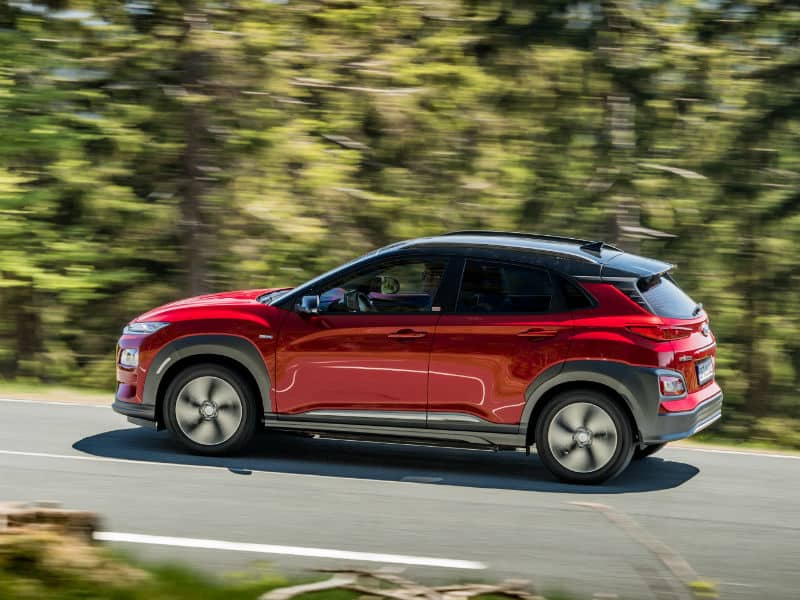
What else should you know about the Hyundai Kona EV?
- Like every Hyundai, the Kona Electric is covered by a five year warranty with unlimited mileage, and that warranty is transferable to the next owner.
- There are just five colours available for the Kona Electric, including the bold Acid Yellow, and all come with a contrasting roof. There are two options available for the inside, cloth or leather, in two colours.
- Every model is generously equipped, with the entry level model fitted with LED daytime running lights, adaptive cruise control, full smartphone mirroring with Android Auto and Apple CarPlay, climate control and a DAB radio and sound system.
- The range starts with the 39kWh SE model at £29,440, rising to £30,815 for the Premium spec. The more powerful 64kWh battery is only available on the Premium car at £33,940 or the top-of-the-range Premium SE at £36,240. All models can benefit from the government’s OLEV grant, reducing the cost (but not the P11d value) by £3,500.
- There’s a 7.2kW charger built in to the Kona, allowing for fast charging from a suitable charging unit at home. An empty to full charge will take 6 hours 10 minutes for the 39kWh car, and 9 hours 35 minutes for the 64kWh model. Rapid charging will take both to 80% charge in 75 minutes.
- A battery heater ensures the battery is kept conditioned in winter, allowing the car to get closer to its claimed range even in low temperatures.
- The Kona has been through Euro NCAP’s crash testing and safety evaluation and achieved the full five stars. No news yet on the EV version but we would expect it to do the same.

